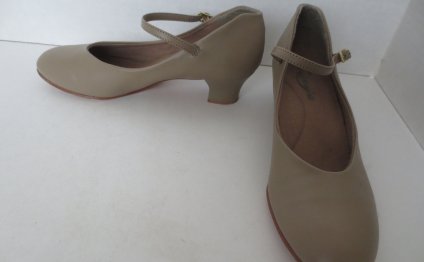
Show Choir Shoes
A Show Choir (originally known as a "swing choir") is a group of people who combine choral singing with dance, sometimes within the context of a specific idea or story.
Location[edit]
Show choir began in the early 1970s, with some show choirs developing even earlier (a show choir called the "Modernaires" began in DeLand, Florida in the late 1960's) as a High School activity, first concentrated in the Midwest. It has since expanded to the East Coast and California, with early popularity beginning in Canada, and in several other countries including Argentina and Japan. It is a continually evolving art form. Many middle schools, junior high schools, and some colleges now have their own show choirs as well.
Counties in the United States with at least one Show Choir program. Relative positions of every past and present SCC registered high school with at least one show choir in the United States (excluding one school in Hawaii) as of November, 2015.Technical Aspect[edit]
While there is no standard requirement for the number of performers, show choirs typically contain between 30 and 60 singer/dancers. Larger schools with a more advanced program may have more than one show choir. Unisex show choirs usually compete in a separate division, with the exception of an "open" division, during which unisex and mixed groups compete against each other.
Show choirs traditionally wear a costume, though the definition of what is considered a costume in show choir is very broad and ranges from jeans and a T-shirt to extravagant period costumes or flashy dance-wear. It can be very conservative (such as tuxedos and ball gowns) or very edgy (such as modern or revealing clothing). Additionally, many larger show choirs include two or more costumes in their show. Participants typically wear stage makeup and shoes conducive to dancing (often "character shoes"). In the Midwest and on the East Coast, woman participants will generally curl their hair to look identical, with large poofs. Californian show choirs do not generally have identical hair. Otherwise, from the costumes to the stage makeup, show choir members often look uniform during most shows.
The choir usually has a backup band (or "combo" if it includes a Horn Section) called a "Pitt Band" providing instrumental music to complement the voices. The instrumentation varies from song to song, but a common show choir band consists of guitar, bass, drums, trumpets, trombone, alto sax, tenor sax, piano, and synthesizer. Some bands include violins or even cellos. Many larger show choirs typically have a larger combo to accompany them. The band is usually out of sight, however some band members have come out on stage to be featured during the show.
A "Tech Crew" is standard with most show choirs, as they assist with and handle the lighting, sound, and stage setup.
One technical problem that arises with show choir is a lack of male members. Due to the stigma that performing arts is a more feminine activity, many teenage boys are discourage to participate show choir. Males also tend to not be draw to show choir because the activity seems less successful then other high school activities, such as sports. A lack of males can cause choirs to lack in vocal performance because they do not have enough pitch variety. In order to achieve rich melodies, choirs need males of all voice ranges from tenor to bass. After a study done by the Choral Journal another alarming factor that has caused there to be a lack of male vocalists in show choir is choir director's lack of investment in the issue. Many choir directors have accepted the fact that they will always have less males in their choir, therefore very few make an attempt to reach out to males in the school. By not making an effort to change this issue, directors unintentionally support this issue. By reaching out to males and creating more of a supportive community for high school boy, more males will likely participate in show choir.
Competitions[edit]
This is an example of a show choir competition program from Totino-Grace's Spectacular competition.Many show choirs participate in competitions, sometimes called "invitationals" (though most are not invitation-only events). These competitions are often held at the high school where the "host group" attends, though some events are held at auditoriums or other facilities that can accommodate larger crowds and provide better acoustic performance.
Competitions can be as small as a showcase of a few groups from the immediate geographic area or they can feature many groups from multiple states. Because of the vast difference in sizes of the competitions, they can last a single afternoon or span an entire weekend. Competitions may separate competing choirs into different divisions. These divisions (called "Tiers") are often determined by age, skill level, size of the school or choir, and/or gender of the participants. The different divisions may take place at a different time, day, or at a different location or venue, though usually within the same school or close geographic area. There are three main divisions: Varsity, Unisex, and Prep. The divisions include Tier I, Tier II, Tier III and Tier IV. The latter two are generally only used by very large competitions in California.
Show choir sets can be presented in a multitude of ways from the more traditional Glee approach to ultra theatrical performances that tell full length stories. These performances done by choirs, or "sets, " are created by the choir's school director and possibly outside performing arts professionals. As this art form has grown, more schools have attempted to create quality performances that can be compared to professional shows.
Many competitions include a preliminary round and a finals found. The finals round commences after the preliminary awards are complete, where the top groups perform again in order to compete for the title of Grand Champion of the contest. The number of performing groups in the finals round is up to the hosting school, but typically 5-6 choirs participate. Those groups are sometimes given the opportunity to take suggestions from the judges made during the preliminary round and make adjustments to their finals performance in order to earn a better score. Hosting schools do not compete in the competition for ethical purposes.
Characteristics of a performance[edit]
Most show choir "shows" or "sets" consist of a variety of songs, often including several choreographed, fast-paced pieces and one slower piece performed with limited or no choreography. This slower number—usually a ballad—exists primarily to showcase the ensemble's singing ability. In California, it is a requirement that at least one minute of any one set be sung a cappella (it is usually one full song in the set), though this is not a standard in the rest of the country. More often than not, the a cappella selection is also the ballad, as it is much easier to sing unaccompanied while holding relatively still. In the Midwest, it is becoming popular to set one song aside as a "novelty" piece, designed to make the audience laugh. "Concept" or "story" shows that unify all of the songs together in a common theme are becoming more popular across the country, especially in California.
Within a song, vocal lines typically alternate between unison or octave singing, and two-or-more-part polyphonic harmony. Songs are chosen, adapted, and arranged from a variety of sources including popular music, jazz standards, and Broadway musicals, but rarely make use of classical music. Original music has also been performed by a small number of groups. Additionally, there is often at least one solo in each performance by a standout singer in the group.
Competitive performance sets range in length, but are usually timed to total between fifteen and twenty minutes. Shows generally consist of, but are not limited to, approximately five songs.
YOU MIGHT ALSO LIKE



Share this Post
Related posts
Show Choir names
It’s been a productive few weeks since the show choir first met! Now that we’ve determined the skill sets and vocal ranges…
Read MoreShow Choir t Shirts
Free Shipping on Orders Over $100 Orders of $100+ get free shipping all day, every day. Valid within the continental US…
Read More










